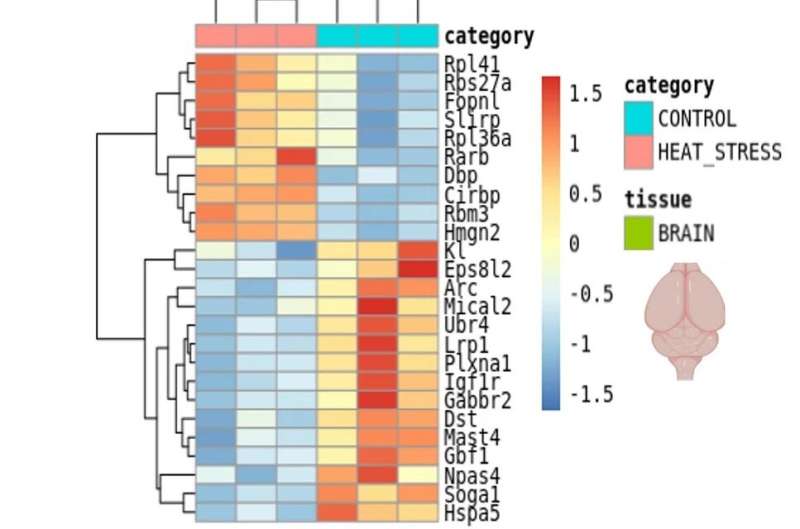This article has been reviewed according to Science X's editorial process and policies. Editors have highlighted the following attributes while ensuring the content's credibility:
fact-checked
peer-reviewed publication
trusted source
proofread
Study shows damaging impact of heat waves on vital organs

Researchers from the University of California, Irvine have found evidence of the molecular causes of the damaging impact heat stress causes on the gut, liver and brain in the elderly. These findings point to the potential of developing precise prognostic and therapeutic interventions.
These organs have a complex and multidirectional communication system that touches everything from our gastrointestinal tract to the nervous system. Whether it is our brain affecting hunger or the liver influencing mental health, understanding the gut-liver-brain communication or "axis" is crucial to protecting human health.
Their study, which was conducted on mouse models, is published in the journal Scientific Reports. It is one of the first to fill the knowledge gap on the effects of heat stress on a molecular level of this crucial biological conversation.
"Inflammation in the brain and spine contributes to cognitive decline, compromises the ability to form new neurons and exacerbates age-related diseases," said corresponding author, Saurabh Chatterjee, a professor of environmental & occupational health at the UC Irvine Program in Public Health.
"By investigating the effects of heat stress on the gut-liver-brain crosstalk, we can better protect our increasingly vulnerable aging population."
Using RNA analysis and bioinformatics to analyze elderly, heat-stressed mice, Chatterjee and his team found evidence of heat stress-affected genes in the brain and liver. A significant increase in the production of ORM2, a liver-produced protein, was observed in the heat-stressed mice. The control group of unstressed mice did not show a change, providing proof of organ dysfunction in the heat-stressed mice.
Researchers believe that increased secretion of ORM2 is a coping mechanism that may be due to gut inflammation and imbalance. In addition, ORM2 may impact the brain through a leaky blood-brain barrier, emphasizing intricate multi-organ crosstalk.
Additionally, the study shows the potential to use ORM2 for targeted biomarker interventions to prevent liver disease in heat exposure. This observation advances molecular insights into the pathophysiology of adverse heat events and will serve as a foundation for future research.
"Our findings have the potential to be used for the development of prognostic and therapeutic markers for precise interventions," said Chatterjee.
"In a dynamically changing global landscape, the imminent threat of climate change is evident in rising temperatures, raising concerns about intermittent heat waves. Our heating planet is undoubtedly leading to acute and chronic heat stress that harms the health of our aging population."
Additional authors from UCI Public Health include members of the Environmental Health and Disease Laboratory: doctoral students Subhajit Roy (the first author), Punnag Saha, Dipro Bose, Ayushi Trivedi and Madhura More; and Christina Lin, Jie Wu and Melanie Oakes with the UCI genomics high-throughput facility.
More information: Subhajit Roy et al, Periodic heat waves-induced neuronal etiology in the elderly is mediated by gut-liver-brain axis: a transcriptome profiling approach, Scientific Reports (2024). DOI: 10.1038/s41598-024-60664-9




















